NOVEMBER 6-7: Shabbat for me was restful, for Mark less so. Friday night we ate dinner in the apartment, food that we had ordered from Ao Vegan Cooperative. Once again, I choose a vegan version of a well-known Portuguese dish – a Francesinha Sandwich. The original is a sandwich made from bread, ham, sausages, and steak, which is typically covered with melted cheese and an egg on top. It is served with a hot thick tomato and beer sauce which you pour on your sandwich. The vegan version was a sandwich of bread and vegan sausages topped with melted vegan cheese. It came with a container of sauce. Looked a little disappointing compared to photos of the original. However, it tasted great.
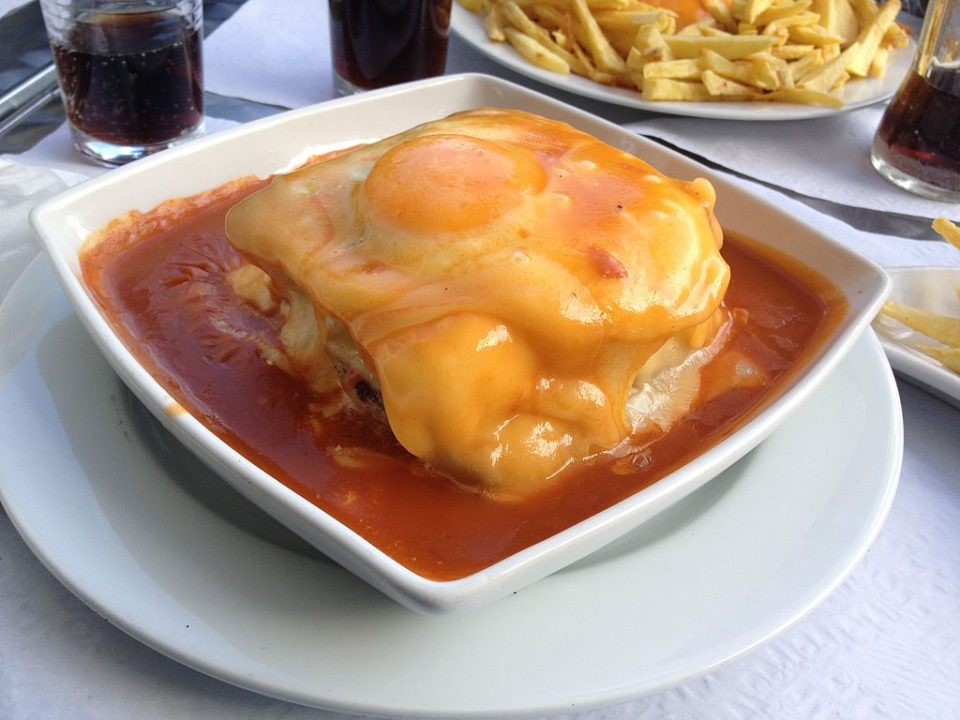
An original Francesinha sandwich. No photo of the vegan version.
Photo from Moisun (Diskussion), Public domain, via Wikimedia Commons
Mark picked up the food in the late afternoon and dinner was only several hours later. After many attempts to set the oven on a low temperature with a clock to keep the food warm, Mark frustratingly gave up (if Mark cannot figure it out, it must be close to impossible). Instead, we came up with a clever way to keep the food warm. The range here is a digital induction range with a timer. We put up a pot of boiling water and on top of that, a cookie sheet. On the cookie sheet we put our food covered with a towel. It worked! Food was warm when we ate it.
Shabbat morning Mark went to the Shaarie Tikva synagogue. After yesterday’s trial run, I was confident that if he does not return home, it will not be because he got lost on the way. We agreed that only if he is not home by 14:00, I am allowed to worry. I stayed in bed with my leg up and finished two blogs posts about our first days in Lisbon. Mark returned at 13:15 and said the davening was very slow (if Mark says its slow, then it is really very, very slow). They read every word out loud. After the service was a kiddush (lots of fish) and Mark spoke with a couple visiting from Philadelphia.
We had our Shabbat lunch – three different salads and some leftovers from the night before.
At about 14:30, we left the apartment and headed to Alfama. Alfama is one of three Jewish areas in Lisbon. It was not destroyed in the earthquake of 1755, and therefore has a much older feel to it. The streets are very narrow and winding. Laundry hangs on the side of the buildings. The older locals sit outside among the small tourist shops and restaurants that dot the alleys.

The narrow streets of Alfama 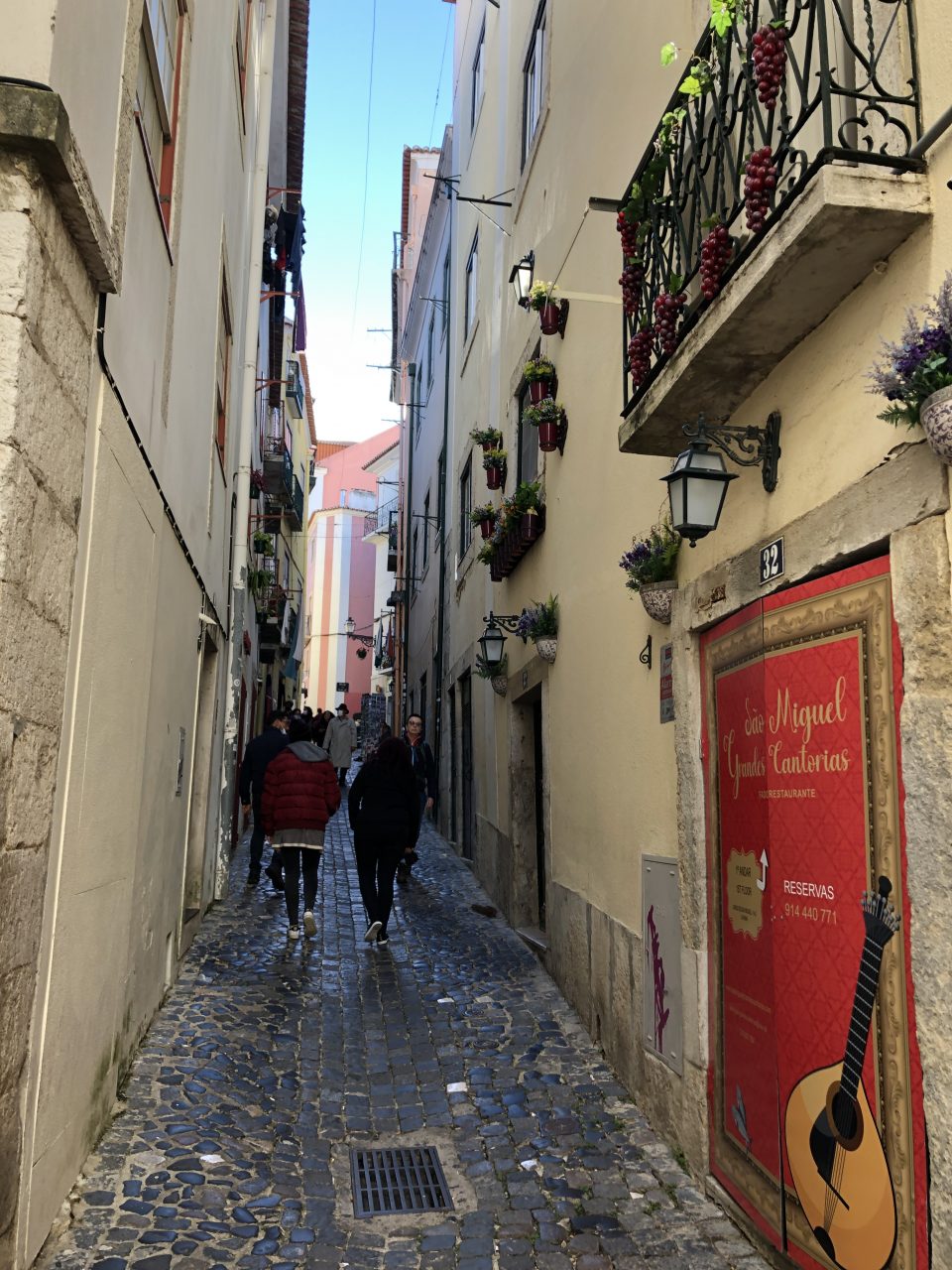
We went with a purpose – to find Rua da Judiaria, the street of the Jews. It was not easy to find among all the twisty, turning lanes but eventually we found it. In the few minutes we were there, three different tour groups came by and talked about the place. None spoke English, so we don’t know what they were saying, but it is obvious that they include the Jewish history of the city in their tour.
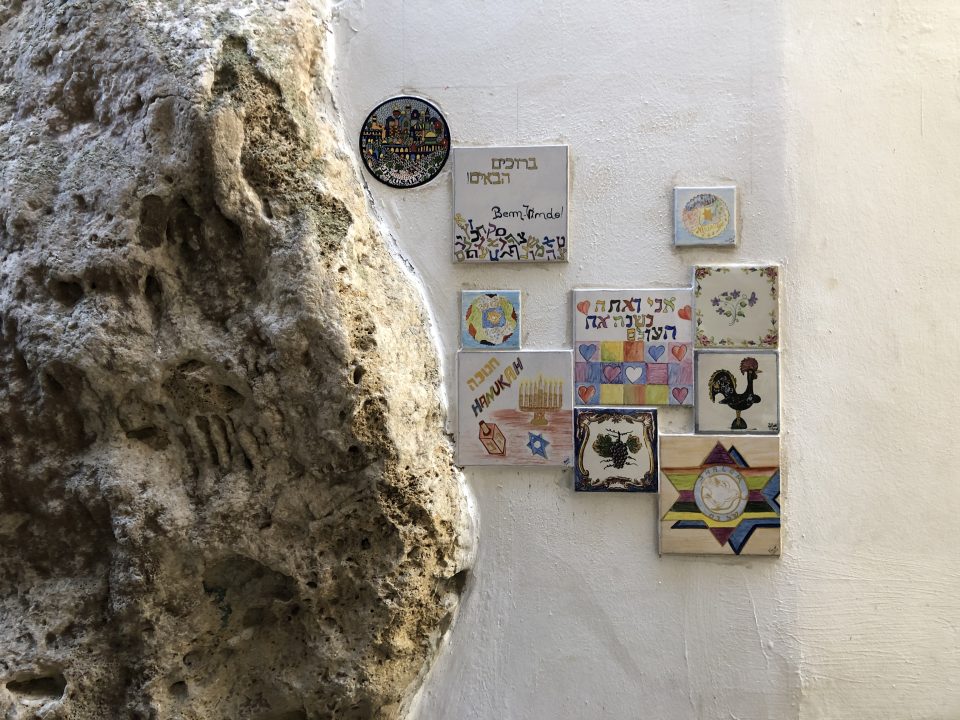
Signs of Jewish life in Alfama 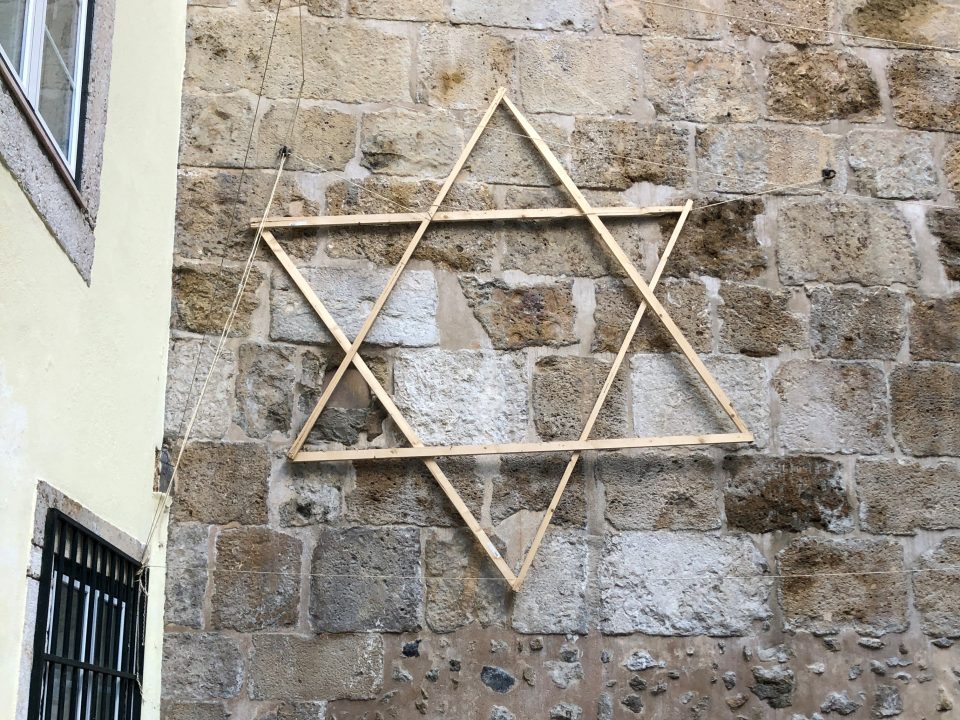
From Rua da Judairai, we looked for a small street called Beca da Barrales, which was supposed to be nearby. In my readings about Alfama, in one article it said that 8 Beca da Barrales, might have been the site of the synagogue. We easily found the street and it was tiny, with only two doors, neither was number 8. We figured what I read was a mistake. Mark then noticed that the next street over has the same name. There we found number 8 – today the entrance to a pizza restaurant. In the article, the reason the person thought that this might be the location of the synagogue, is it is the only door around that is wide and arched. All the other entrance doors in the area, are your usual rectangle shape, and here is one that is larger and different.

In the past, possibly a synagogue. Today a restaurant.
We walked back to the apartment through the Alfama neighborhood. My leg was better but far from good. Hiking stick helps. People make way when they see me limping along.
It was a quiet evening. I watched my Israeli TV shows, Mark did his studying, and then off to sleep.
Sunday morning began with a private walking tour of Jewish Lisbon. This was given by Daniel, a historian who specializes in the Jewish history of the area. He was an excellent guide, very knowledgeable. His descriptions of the Jewish presence in Portugal was very different than the perception we had understood from our research on the internet.
One of the interesting things he pointed out, for example, was that In the middle ages, there were the peasants, and there was the aristocracy (landowners). It was in the interest of the landowners to keep the peasants illiterate. The Jews on the other hand were literate, and therefore took up the occupations that required literacy – doctors, commerce, etc. They therefore played an important role in the society. At the time, if you were literate you were either aristocracy or Jewish. Today, when Portugal offers Jewish descendants the possibility of getting Portuguese citizenship, one of the criteria is to show that your ancestors where literate over 250 years ago.
We walked through the Bairro Alto neighborhood situated on the top of the hill opposite St. George’s castle. This was the area where the wealthy Jews lived before the inquisition – the doctors, the importers, etc. He showed us a house decorated with peppercorns and he spoke about the importance of pepper. Pepper was and still is the most popular spice in the world, and much wealth can be had by controlling the pepper trade. Before Vasco de Game discovered the sea route to India, pepper was brought over land and taxed heavily by the countries it crossed. Once it could be brought over on the sea route, taxes could be avoided. His guess is that this was a house that might have belonged to a very wealthy Jew, who owed his wealth to the pepper trade.
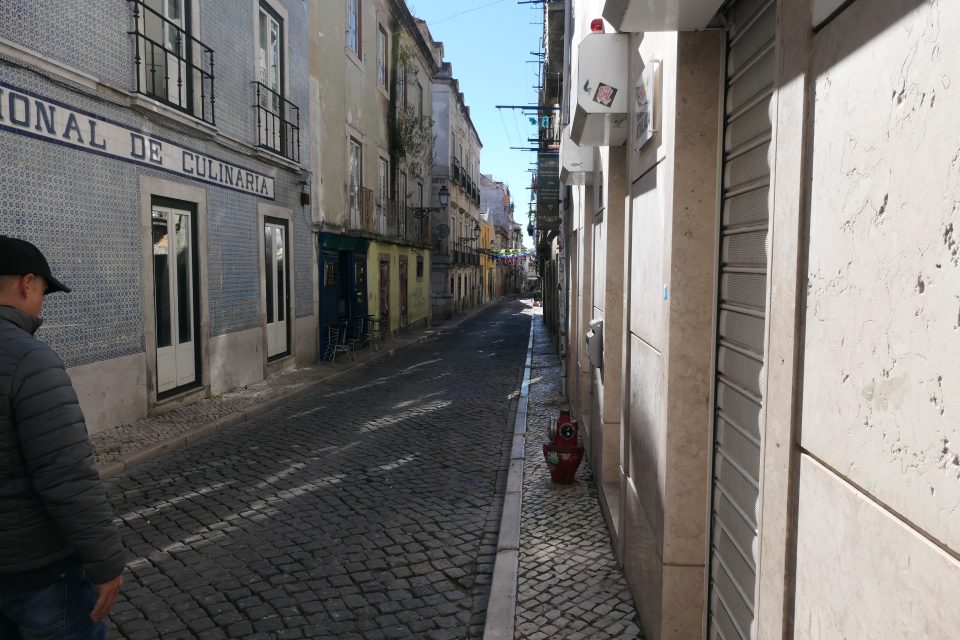
Streets are empty in Bairro Alto on a Sunday morning 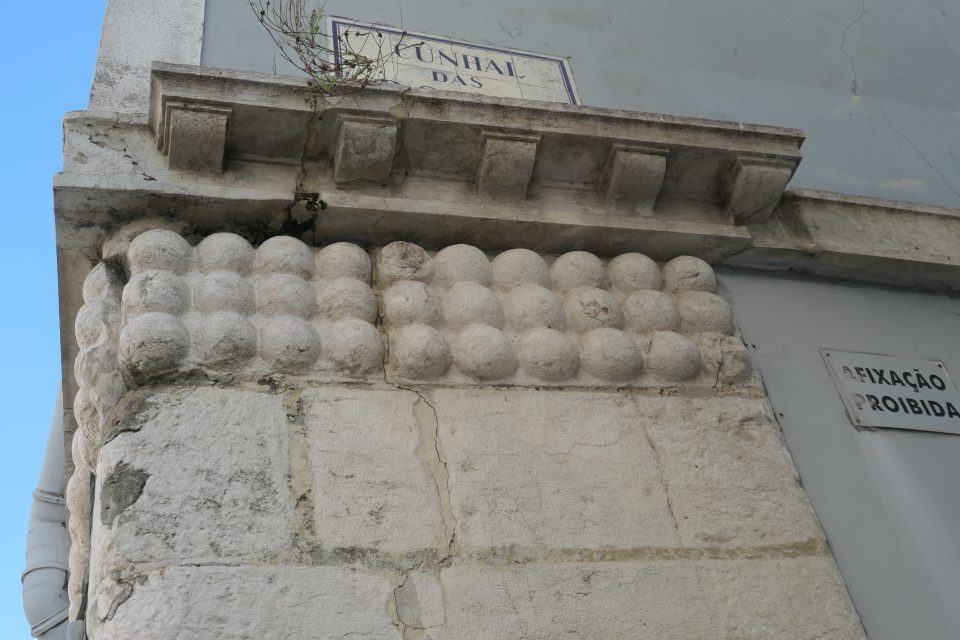
House decorated with peppercorns
This is just a very small part of all we learned from Daniel.
Although Daniel’s father is today a practicing Catholic, it is known in his family that they are New Christians – converted Jews. This is further backed up by one of his last names – Pereira – means pear tree (often the conversos took names of fruit trees). He also has proof that his family was literate over 250 years ago.
During the tour we took a small coffee break in Confeitaria Nacional, a bakery founded in 1829 and still operating. They have their own recipe for Pastel de Nata and I thought these were even better than the ones from Pastéis de Belém They had a much thicker, very crispy and light filo dough crust which to me, made them even better.
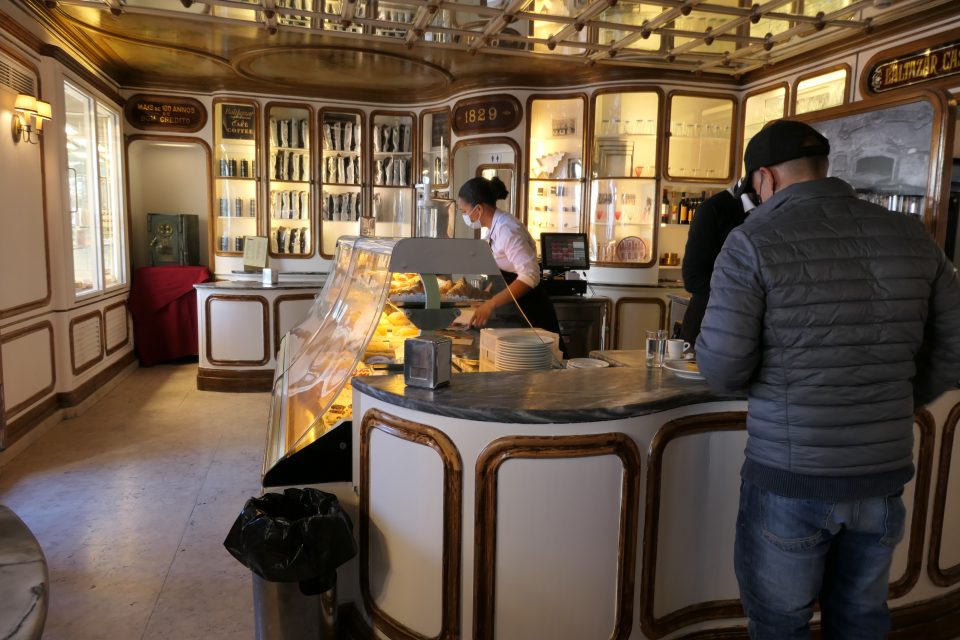
Confeitaria Nacional bakery. Notice the 1829.
The tour with Daniel ended near Rossio square. After a quick sandwich lunch, we decided to return to the top of the hill to the viewpoint – Miradouro de São Pedro de Alcântara. This has a view of the city with the castle on the hill opposite. Daniel had told us that inside the train station are escalators and they will take us part way up the hill. Someone should really write a guide to escalators in Lisbon. Mark discovered one in the H&M store across the street from our apartment that brings you up from downtown. We took the escalatour in the train station and then, Mark calculated, that we climbed another 15 stories to reach the lookout. Beautiful views!
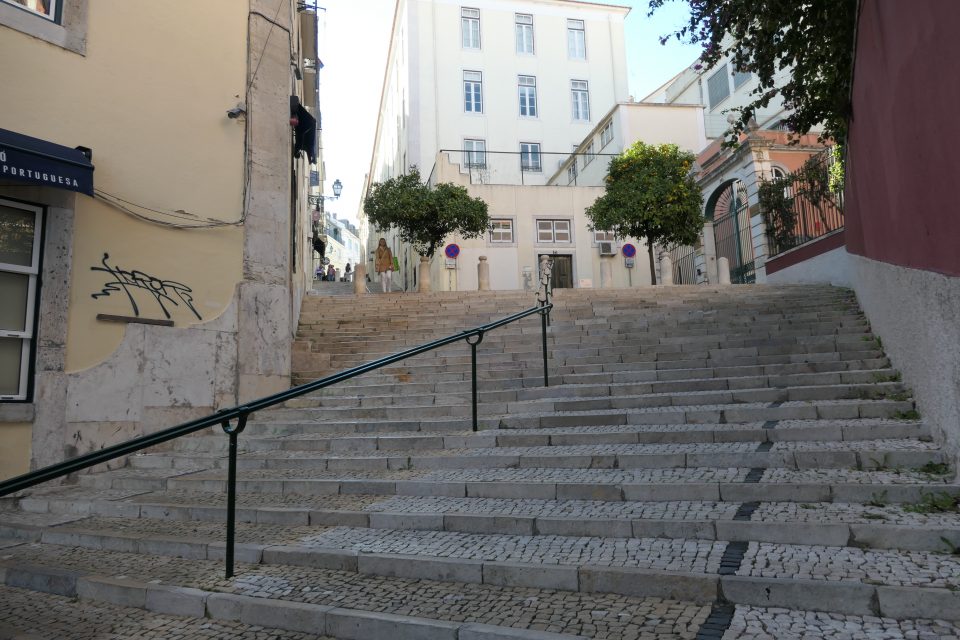
A small section of the stairs going up 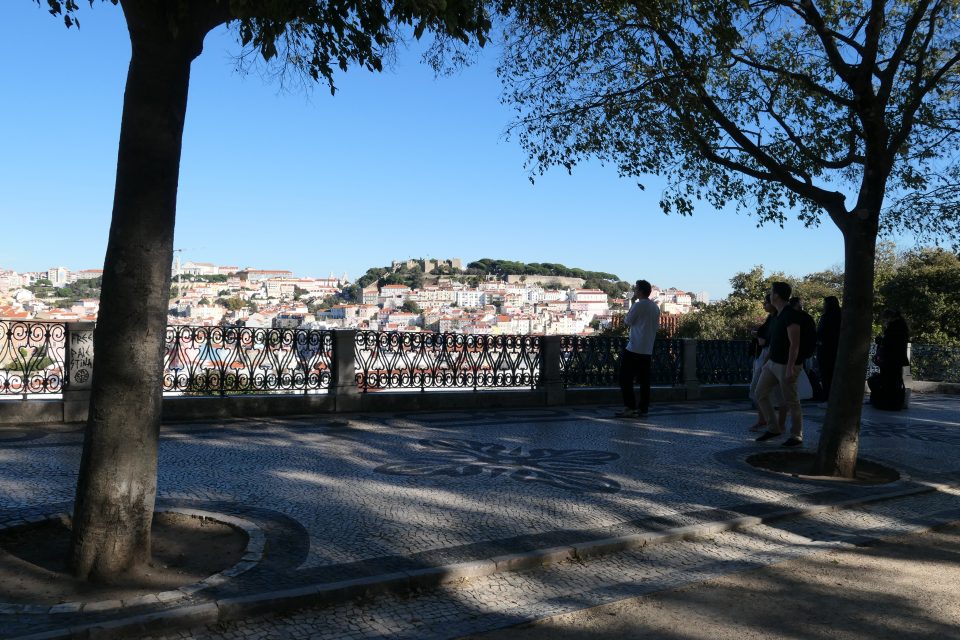
Notice the castle in the hill across 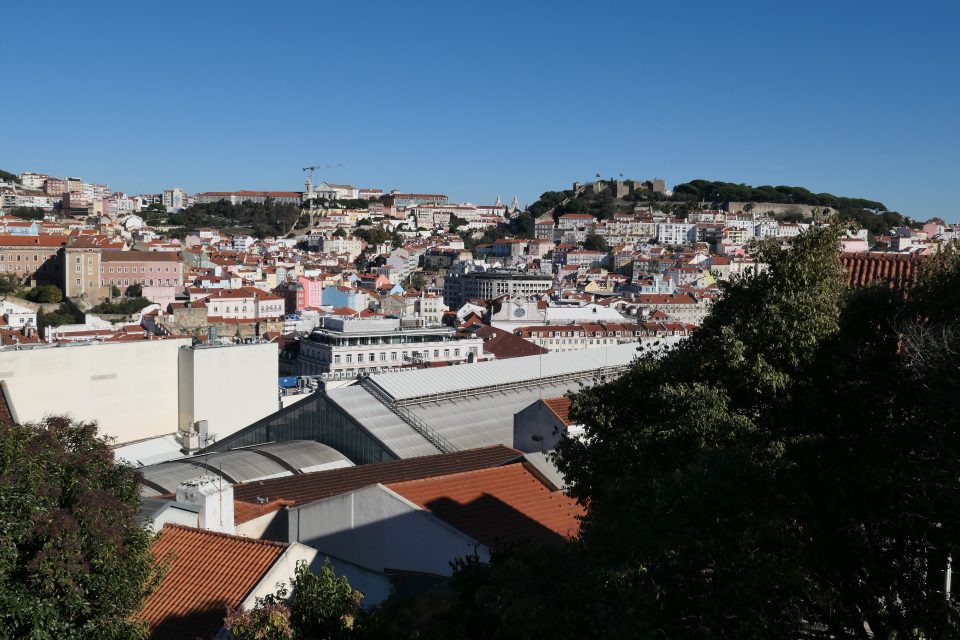
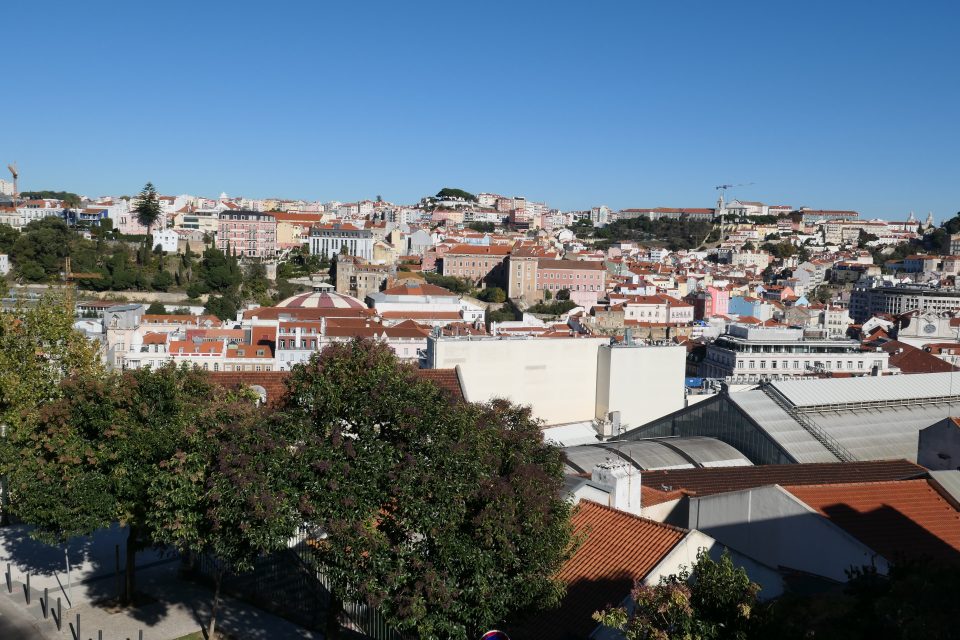
From there we decided to walk back to the apartment, stopping on the way to make reservations at a vegan restaurant for dinner. Although it was only three in the afternoon, there were no more reservations available for that evening – booked solid. We therefore put in an order for take away and once again ate in the apartment. Amazing how hard it is to get a table in a vegan restaurant, and this is off-season!
At home, we organized our suitcases. On the way here everything was packed to distribute the weight evenly among our suitcases so we would not be overweight on the plane. Now we repacked everything according to subject. One suitcase for our clothes. One for our kitchen supplies. One with groceries.
Being Sunday, we then participated in our weekly family zoom (a nice result of corona), and then afterwards Mark returned to the restaurant to pick up our food. While waiting as they packed the order, he counted that the restaurant sat over 85 people, not a small place, and yet, totally reserved. The food was delicious – I think the best we have had so far. The Green Affair Chiado –recommended!
Tomorrow morning we pick up the car and the driving begins.
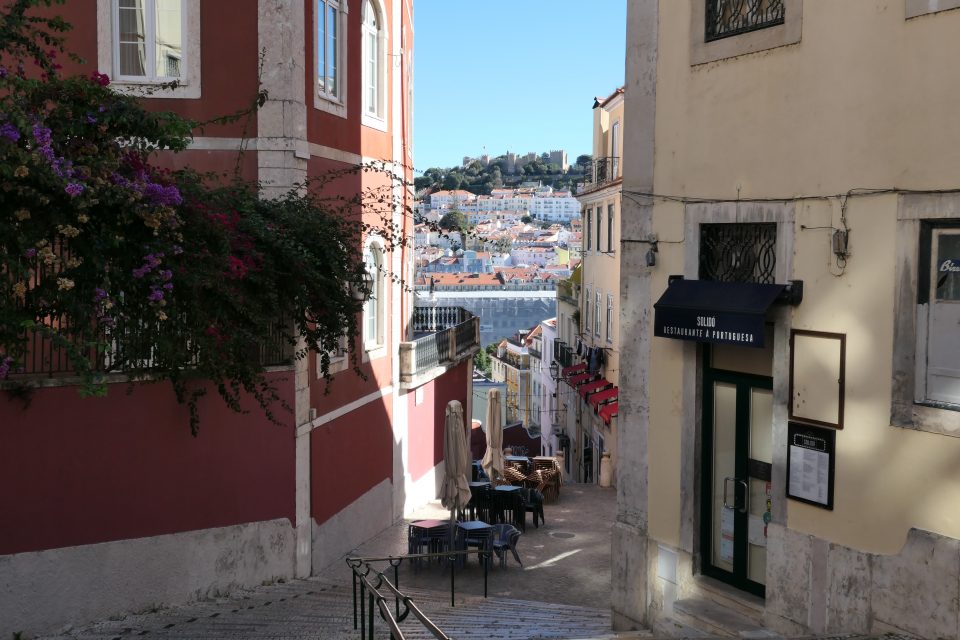


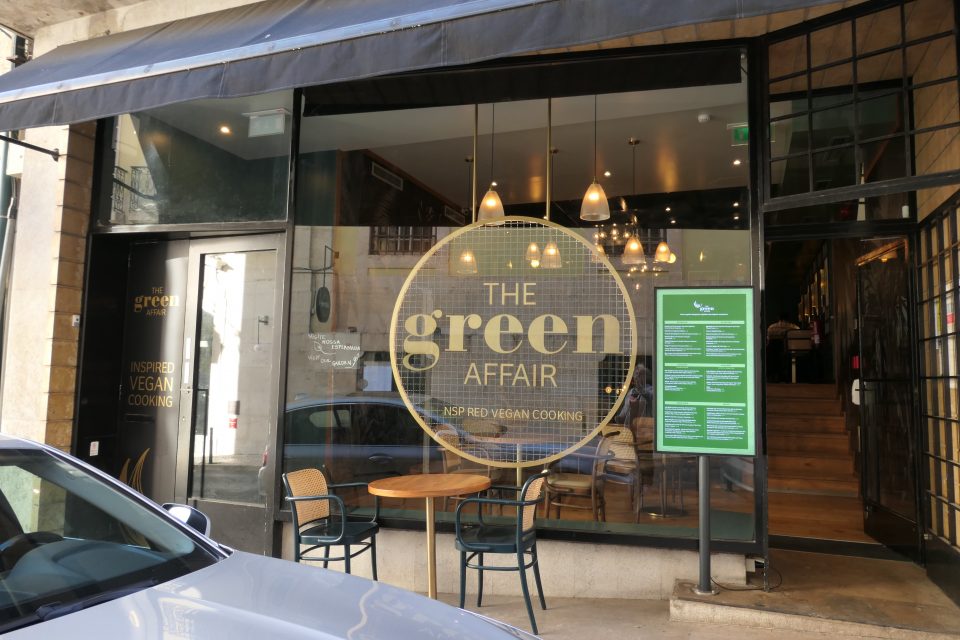
Very interesting!